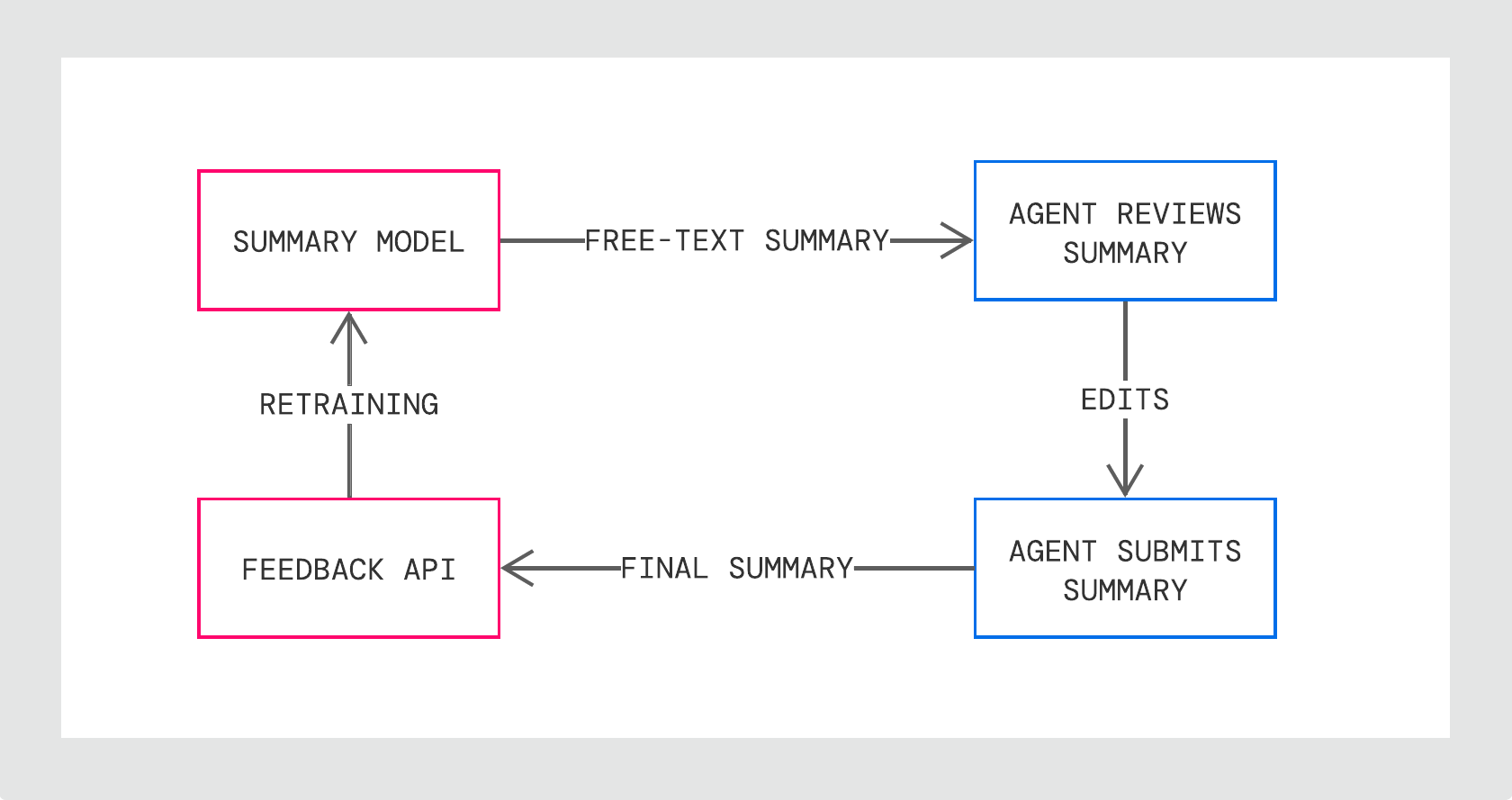2024-12-18 - Intents Self Service Tooling
Intents Self Service Tooling
The Intents Self Service tool in ASAPP’s AI Console provides a streamlined interface for managing intent classification. This automated, self-serve UI allows customers to:- Upload, create and modify intent labels without support team intervention
- Manage intent label hierarchies during onboarding or as business needs evolve
- Consolidate or create more granular intents
- Deploy changes to production within minutes
- Zero-day customer onboarding
- Self-service intent management through an intuitive frontend
- Real-time intent classification deployment pipeline
How It Works
How It Works
How It Works
This service is built on a front-end interface, no separate API configuration is required from the customers.Import Flow of Intents- Upload a csv/text file with the intent details, Refer to the provided links in the guidelines to familiarize yourself with the required file format and the necessary information for intents.
- Select the desired file and upload the file
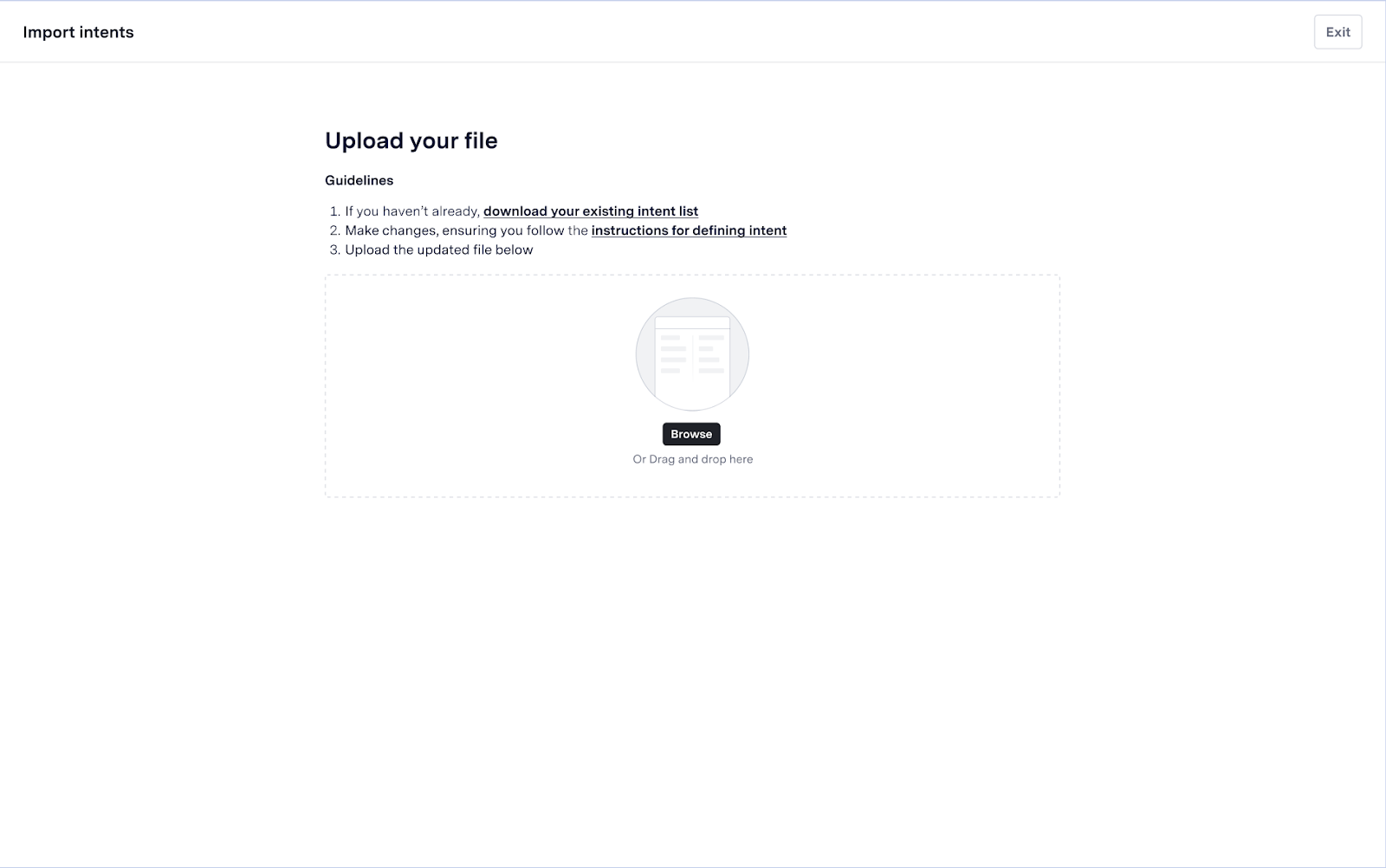
- Review selected file before deploying the intents
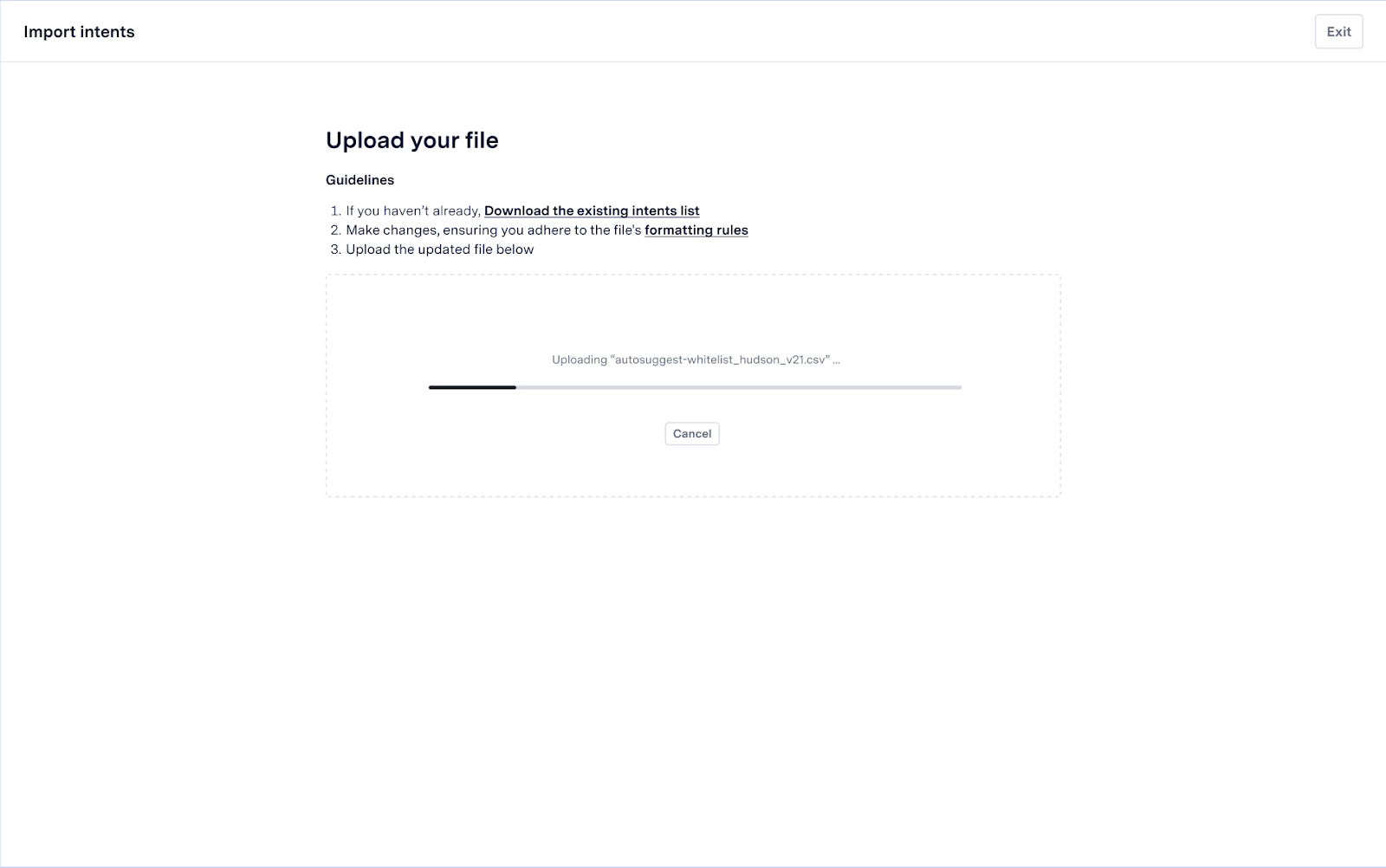
- Review and verify your uploaded intents
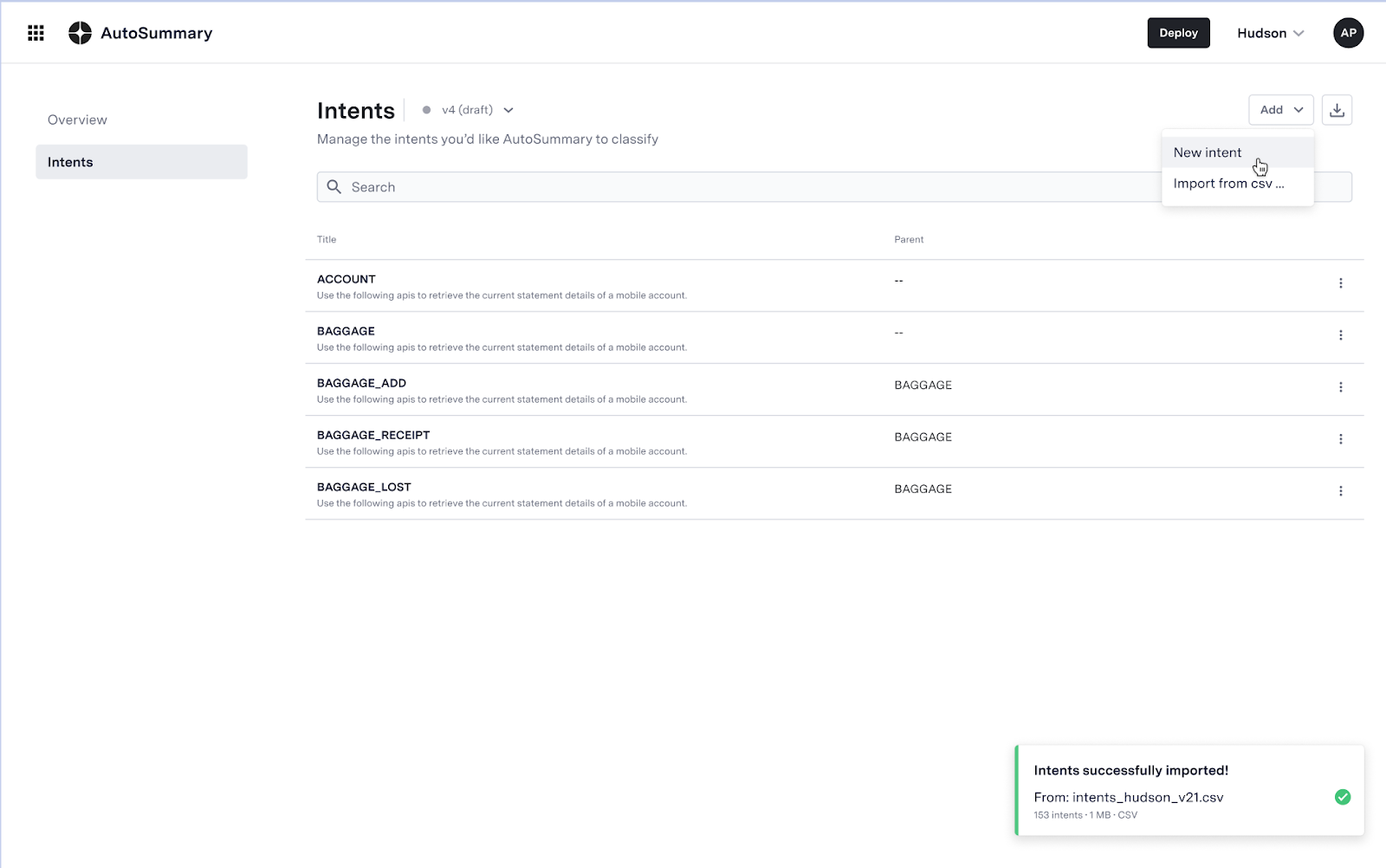
- Review the existing Intent hierarchy and click ‘New Intent’ from the ‘Add’ button top right

- Add intent details such as the intent label, parent intent, and description. Refer to sample file in case any further clarifications

- Click on create intent to add the intent to the hierarchy
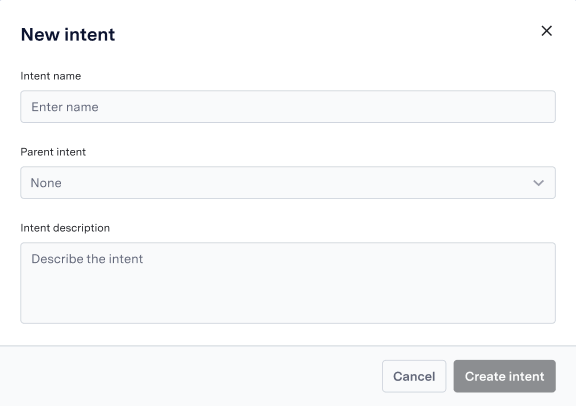
- Review and verify your created intent
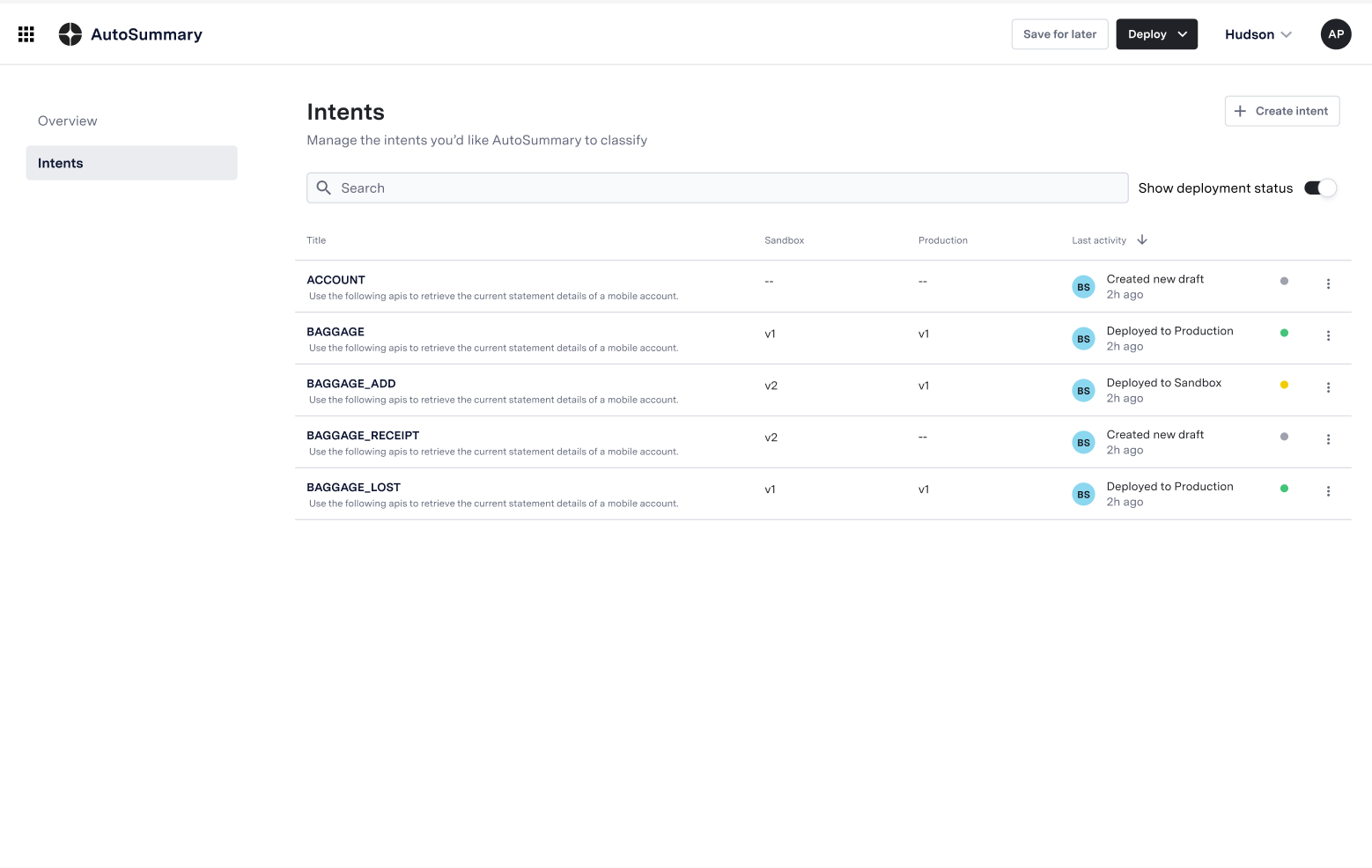
FAQs
- What file formats are supported for uploading intents label hierarchy? ASAPP’s Intent Self-Serve tooling supports CSV and Excel file formats for uploading intents.
- Can I edit or update my intents hierarchy after uploading? Yes, the tooling functionality allows you to edit or update your intents at any time after uploading them, ensuring you can refine and improve your intent classification as needed.
- Do I need to have technical expertise to use the Intent Self-Serve tooling? No, intent front-end tooling is designed to be user-friendly, with no API configuration required. The intent labels can be easily uploaded, created, and managed without needing any technical assistance.
2024-03-01 - Structured Data
Structured Data
Structured Data is a powerful, fully customizable feature for extracting customizable data points from conversations through:- Entity extraction: Automatically identifies key information like product names, dates, amounts, and more
- Question extraction: Answers predefined questions about conversations (e.g., “Was the issue resolved?”)
- Generating automated insights and reports at scale
- Populating CRM fields directly from conversations
- Monitoring compliance and script adherence automatically
- And more.
Structured Data
Learn how to configure and manage Structured Data
2023-10-27 - Salesforce Integration
Salesforce Integration
ASAPP’s native Salesforce plugin now includes AI Summary integration. This enables Salesforce administrators to quickly install and configure AI Summary within their Lightning environment.The low-code plugin allows administrators to deploy AI Summary in hours without complex integration work. Once enabled, the system automatically generates and saves conversation summaries to Salesforce records, eliminating the need for manual note-taking by agents.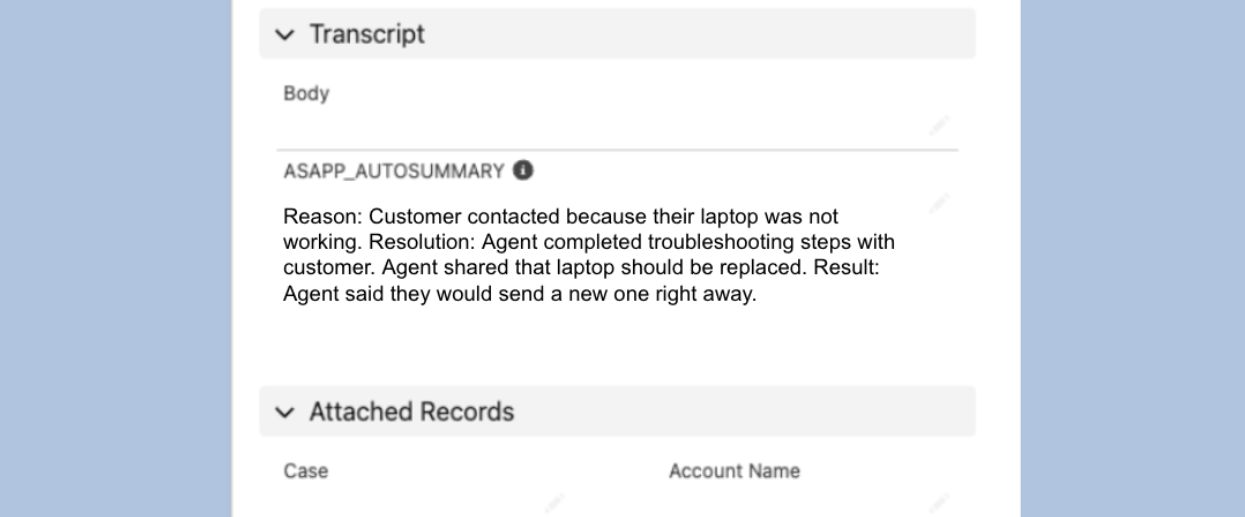
AI Summary works seamlessly alongside ASAPP’s AI Compose for Salesforce.
How It Works video
How It Works video
Watch the video below for an overview on AI Summary for Salesforce:
2023-10-18 - Free-Text and Feedback Feeds for AI Summary
Free-Text and Feedback Feeds for AI Summary
ASAPP introduces two feeds to retrieve data for free-text summaries generated by AI Summary and edited versions of summaries submitted by agents as feedback.These two feeds enable administrators to retrieve AI Summary data using the File Exporter API:- Free-text feed: Retrieves data from free-text summaries generated by AI Summary.
- This feed has one record per free-text summary produced and can have multiple summaries per conversation.
- Schema: autosummary_free_text
- Feedback feed: Retrieves data from feedback summaries submitted by the agents.
- This feed contains the text of the feedback submitted by the agent.
- Developers can join this feed to the AI Summary free-text feed using the summary ID.
- Schema: autosummary_feedback
How it works video
How it works video
Watch the following video walkthrough to learn about the Free-Text and Feedback feeds:
2023-09-05 - Sandbox for AI Summary
Sandbox for AI Summary
ASAPP introduces the AI Summary Sandbox, a testing environment in AI-Console that allows administrators to validate and experiment with summary generation before deploying to production. The Sandbox supports both voice and messaging conversations, letting users simulate interactions or upload existing transcripts to preview how AI Summary will perform.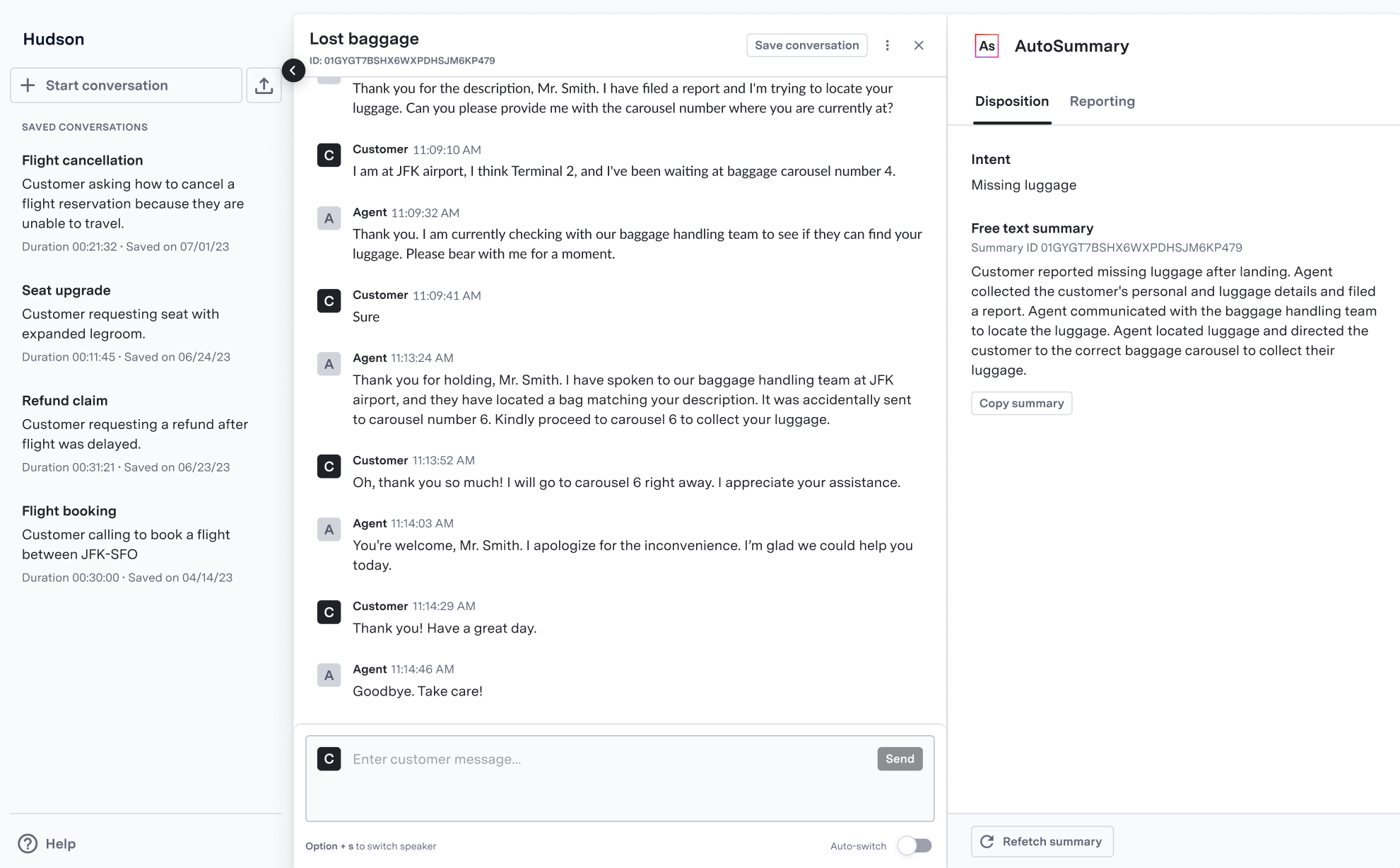
AI Summary's intent and free-text summary generated in the Sandbox.
Free-text summaries are always available, while intent and structured data require additional configuration.
How It Works video
How It Works video
Watch the following video walkthrough to learn how to use the AI Summary Sandbox:
2023-02-08 - Feedback for AI Summary
AI Summary now supports model retraining using agent feedback. The feedback endpoint receives free-text paragraph summaries submitted by agents, and uses the difference between the automatically generated summary and the final submission to improve the model over time.